Passenger train services • Main line services / Ticketing • High speed Rail • Japan • JR West
➤ See also: Shinkansen overview – Shinkansen infrastructure and stations – JR Hokkaïdo – JR East – JR Central – JR Kyushu
➤ See also: High speed train in France – High speed train in Germany – High speed train in Italy – Economics
Note: For educational purpose only. This page is meant purely as a documentation tool and has no legal effect. It is not a substitute for the official page of the operating company, manufacturer or official institutions. It cannot be used for staff training, which is the responsibility of approved institutions and companies.
👉 (Version française disponible)
In brief
In April 1987, the Japanese National Railways (JNR) were divided into seven companies: one for freight and six for passenger transport, known as JR. We will briefly present the high-speed rolling stock of each of these companies : JR Hokkaido, JR East, JR Central, JR West and JR Kyushu.
The JR West Shinkansen network, primarily consisting of the Sanyo and Hokuriku Shinkansen lines, represents a critical component of Japan’s high-speed rail infrastructure. The first JR West Shinkansen service began operation on March 10, 1975, with the extension of the Sanyō Shinkansen from Okayama to Hakata. This service was initially operated by the Japanese National Railways (JNR). After JNR’s privatization, JR West took over the operations of the Sanyō Shinkansen in 1987, when the company was established.
Infrastructure managers: JR West
Operators: JR West
First services: (10 March 1975 under JNR)
Lenght of Shinkansen network : 722 km
Speed : 260 to 300km/h
This milestone significantly expanded the Shinkansen network, connecting the Kansai region (Osaka) with western Japan (Kyushu), and making high-speed rail travel more accessible across the country.
Technologically, these trains operate at speeds of up to 300 km/h on dedicated tracks, using advanced signaling systems like ATC (Automatic Train Control) for safety and efficiency. The Sanyo Shinkansen connects Osaka to Fukuoka, integrating seamlessly with the Tokaido Shinkansen operated by JR Central. Meanwhile, the Hokuriku Shinkansen, partially under JR West’s jurisdiction, extends toward Kanazawa, with further extensions planned to connect the network to regions like Tsuruga.
Economically, the JR West Shinkansen serves as a vital artery for passenger and business traffic across western Japan, contributing significantly to regional economies. The Sanyo line, in particular, links major urban centers and industrial hubs, driving domestic tourism and facilitating labor mobility. High load factors and premium ticketing options ensure a strong revenue stream. Despite high operational costs, including maintenance of advanced infrastructure and rolling stock, the Shinkansen’s profitability benefits from its punctuality, energy efficiency, and economies of scale.
The definition of a high-speed train varies by region, but generally, it refers to trains that operate at speeds of at least 250 km/h (155 mph) on newly built lines and 200 km/h (124 mph) on upgraded lines. In Europe, for example, the UIC (International Union of Railways) considers a commercial speed of 250 km/h as the principal criterion for high-speed rail. In the United States, the definition can include trains operating at speeds ranging from 180 km/h (110 mph) to 240 km/h (150 mph).
➤ See the UIC definition
National rolling stock (past and present)
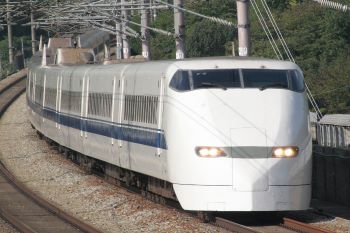
Hitachi, Kawasaki Heavy Industries, Kinki Sharyo, Nippon Sharyo
1990 – 2012
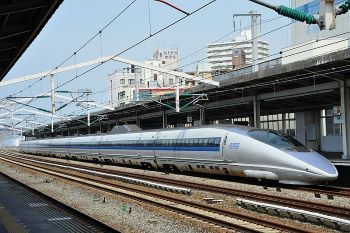
Kawasaki Heavy Industries, Kinki Sharyo, Hitachi Kasado Works, Nippon Sharyo
1997 – …
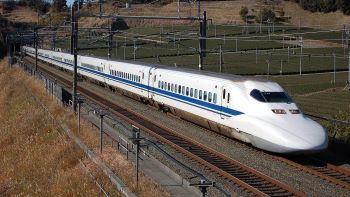
Hitachi, Kawasaki Heavy Industries, Kinki Sharyo, Nippon Sharyo
1997 – …
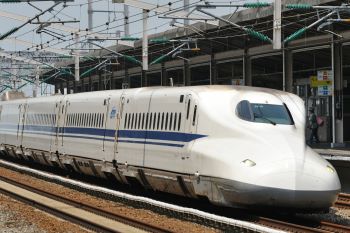
Hitachi, Kawasaki Heavy Industries, Kinki Sharyo, Nippon Sharyo
2007 – (2019)
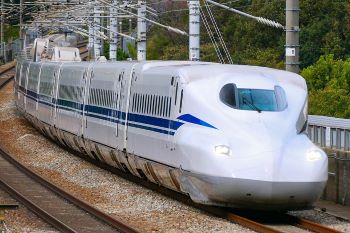
Hitachi, Nippon Sharyo
2020 – …
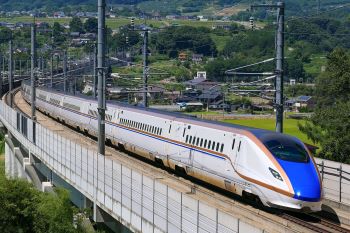
Hitachi, Kawasaki Heavy Industrie,s Kawasaki Railcar Mfg, J-TREC
2015 – …
[TOP]
Infrastructure • High speed Rail • Japan • Lexical
